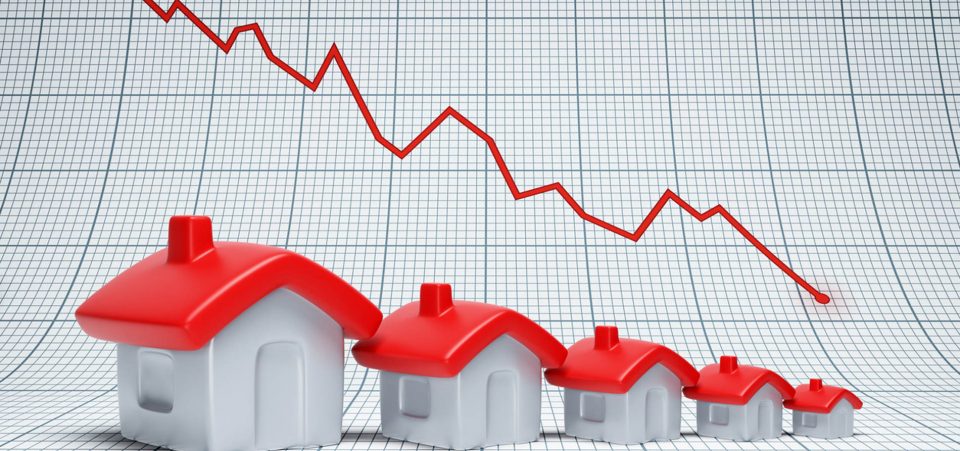U.S. Existing Home Sales Fall Further Than Expected
The U.S. real estate market is taking a breather. Or perhaps it’s a sign of darker times to come for the U.S. housing market, as existing home sales and new home sales data from December 2016 fails to impress.
U.S. existing home sales, which account for the vast majority of U.S. housing, fell 2.8% in December 2016 to a seasonally adjusted rate of 5.49 million units. Economists expected existing home sales to slide by 1.8% in December. While the number of units available is tight, both rising home sales and mortgage rates are exacerbating the situation. (Source: “Existing-Home Sales Slide in December; 2016 Sales Best Since 2006,” National Association of Realtors, January 24, 2017.)
The median sale price for all existing home types increased four percent year-over-year in December to $232,200. For those debt-laden, cash-strapped Americans looking to get onto the property ladder, December’s price increase marks the 58th consecutive month of year-over-year gains.
Mortgage rates were also up significantly in December, at 4.32%, from 3.5% in early November. Economists expect mortgage rates to climb to around 4.5% this year. Rising interest rates and housing prices are making owning a home in the U.S. less affordable.
But this has been an ongoing problem for first-time home buyers since the Great Recession ended and the so-called recovery began in 2009.
First-time home buyers, a benchmark for how well the U.S. economy is doing, accounted for just 32% of all purchases in December, unchanged from November and from the same year-ago period. The 30-year average—and a number that economists consider healthy—is 40%. First-time home buyers also accounted for 32% of all existing home sales in 2016.
First-time home buyers continue to be squeezed out of the housing market by investors. All-cash sales accounted for 21% of transactions in December, unchanged from November and down from 24% a year ago. Individual investors purchased 15% of homes in December, up from 12% in November and unchanged from a year ago. 59% of investors paid in cash in December 2016.
First-time home buyers are an important part of the U.S. economy. When people first buy a home, they spend money on furniture, appliances, furnishings, renovations etc. Those who buy homes as investments to rent out generally don’t spend a lot of money to get a property ready.
New U.S. Home Sales Dropped Sharply in December
One would think that the alleged strong job growth, wage increases, and low inventory levels would translate into strong new home sales figures in the United States. If you can’t find an existing home, surely the average American can instead look at a new home?
Not yet.
New home sales plunged 10.4% in December 2016 to a seasonally adjusted rate of 536,000. Economists were expecting new home sales to dip just 1.5%, to 583,000 sales. This represents the slowest monthly sales pace since February 2016, and the steepest one-month drop since March 2015. (Source: “New Residential Sales in December,” United States Census Bureau, January 26, 2017.)
The median sales price for a new home sold in December 2016 was $322,500. The average sales price was $384,000. While new home sales were responsible for only 10% of all U.S. home sales in 2016, it is still well below the pre-Great Recession average of 16%.
Economists are predicting that new home sales will trend higher in 2017 as home builders try to fill the void of existing single-family homes for sale. Housing starts were up 11.3% in December to a seasonally adjusted rate of 1.23 million.
The median sales price of a newly built home in 2016 was $322,500, up 11.6% from $288,900 in 2015. This wouldn’t be so bad if inflation was significantly outpacing wage growth, but it is. And shows how the government’s official inflation rate of just over two percent seems a little out of step with what the average American is seeing.
Just like existing home sales, declining new home sales are an indication that affordability is becoming an even greater challenge for Americans. Moreover, rising mortgage rates are worrisome trends for first-time home buyers, which could take a big bite out of the U.S. housing market. This could be a serious drag on the U.S economy in 2017. The housing sector’s combined contribution to gross domestic product (GDP) averages 15–18%. (Source: “Housing’s Contribution to Gross Domestic Product (GDP),” National Association of Home Builders, last accessed January 26, 2017.)
What are those who cannot afford a home to do? Continue living with their parents! Today, 40% of Millennials live with their parents or a family member. In 2005, before the Great Recession, it was 33%. In 1940, the number stood at a record 40.9%. You can expect Millennials to break that record in 2017. (Source: “Percentage of Young Americans Living With Parents Rises to 75-Year High,” The Wall Street Journal, December 21, 2016.)
Builders and real estate agents might be optimistic about the U.S. housing market in 2017, but those who need well-paying, secure jobs aren’t on the same page yet.






